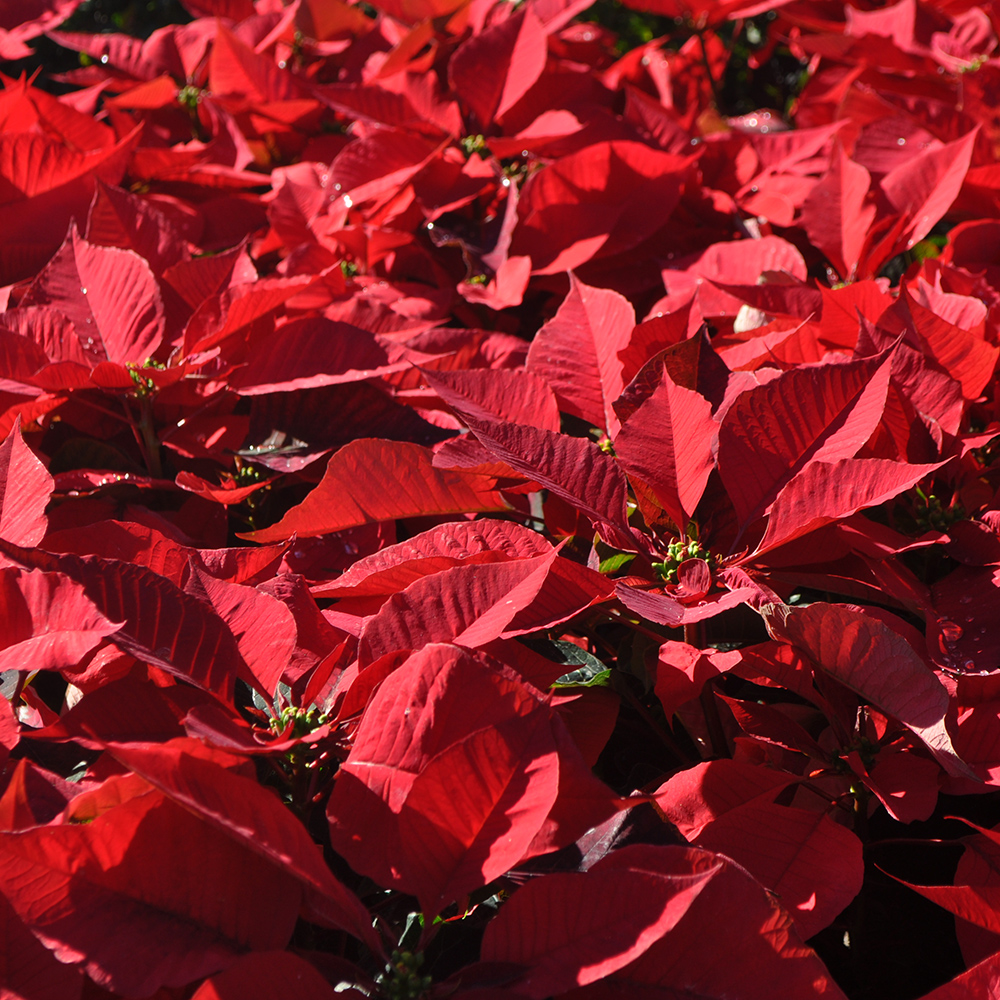
The holidays are approaching, and with them come decorations galore! You’ve probably been seeing holiday décor in stores for weeks now, and poinsettia plants are on sale everywhere.
Poinsettias are popular at this time of year, because their brightly colored red (or sometimes white) leaves provide a splash of festive color during the winter. The plants are indigenous to Mexico, and grow well in our climate, so you can transplant your poinsettias outside when the holiday season is over.
But you’ve heard that poinsettias are poisonous, right? So, you’re probably wondering why anyone would be so eager to bring these plants into their homes, where they are easily accessible to pets and children! The truth is, poinsettias are only mildly toxic, and in the vast majority of cases a child or pet would have to ingest a very large amount to sustain any real harm. If your pets regularly nibble the leaves, you might notice mild symptoms like excessive drooling or diarrhea. A child, on the other hand, would have to ingest about 500 poinsettia leaves to get sick. And since the leaves reportedly taste unpleasant, it’s unlikely that Rover or Little Susie would do more than take a quick nibble.
So, with poinsettias being perfectly safe in the majority of cases, feel free to bring home a few plants! Place the pots near a sunny window, preferably one that faces South, East, or West to reap as much sunlight as possible. Water your poinsettias when the soil feels dry to the touch, being careful not to over-water them. Allowing the plant to sit in water is a sure way to wilt it and ruin its appearance.
After the holidays, you can continue to enjoy your poinsettias all year. These plants don’t do well in temperatures under about 60 degrees, but once it warms up outside you can move them to the porch, balcony, or yard if you choose. In May, cut the stems back to about 4 inches, and watch for new growth. Once new growth appears, you can fertilize your plants every two weeks.
Beginning in July, pinch back each stem by about one inch. This helps the plant to grow into the full, bushy shape most commonly associated with poinsettias. If you skip this step, you might wind up with a tall, spindly plant instead.
Poinsettias will bloom again, beginning in November, but only if they receive less than 12 hours of sunlight per day. Starting in October, you should move your plants back indoors, to replicate the correct blooming conditions.
We wish you the best of luck with your living holiday décor!









Write a comment: